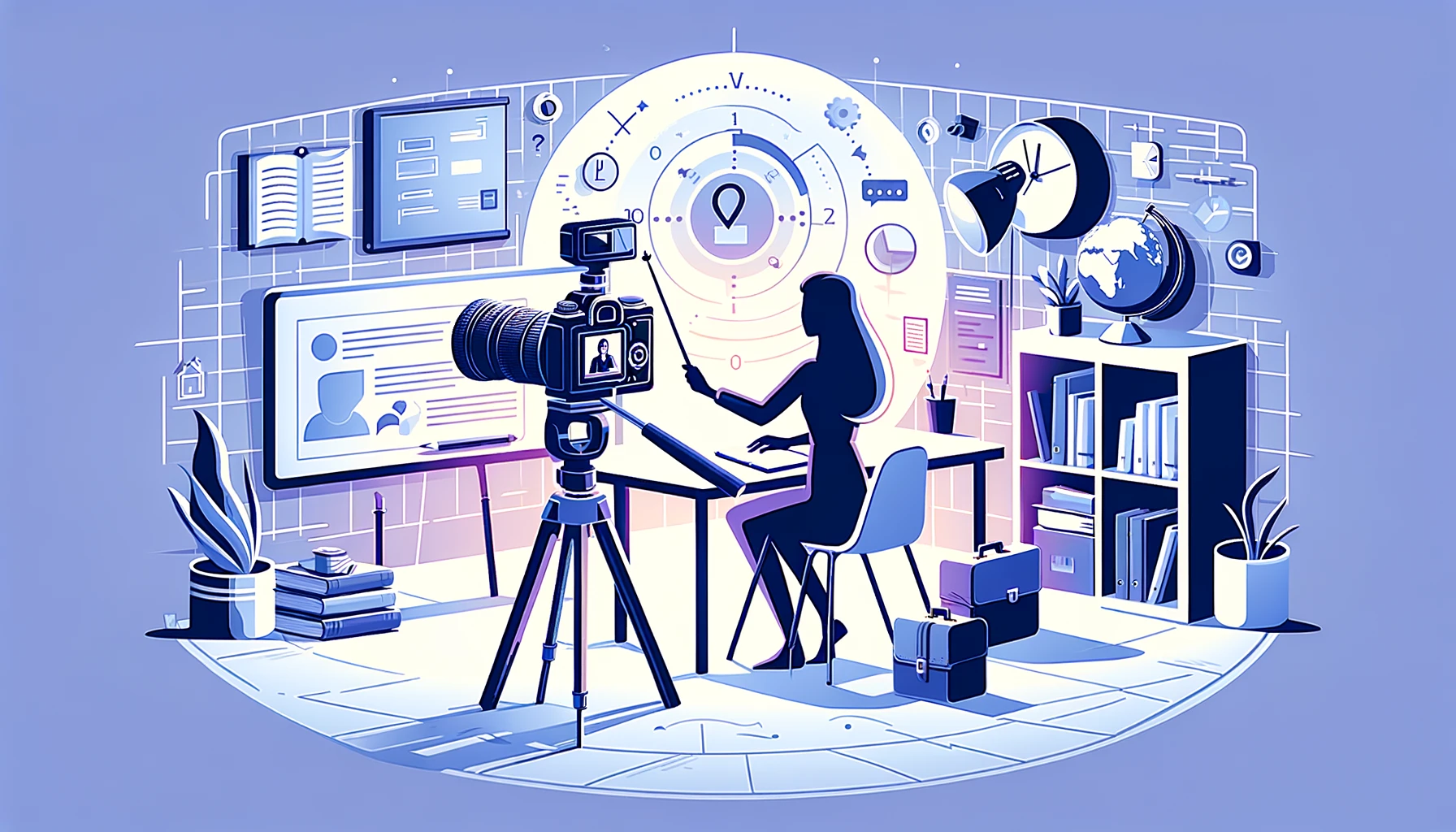
3 Ways AI-Generated Content Will Change the eLearning Industry
Create AI videos with 230+ avatars in 140+ languages.
The day-to-day problems concerned with creating e-learning courses are all too familiar for those in the industry. While authoring and LMS tools has improved significantly it is still very difficult to scale video production. But with the advent of AI-driven tools for video creation companies will be able to deliver better and more customised courses at a much faster pace than what is possible today.
Today, creating large volumes of content for courses becomes a regular pain, from location/studio problems to reshoots, and scheduling issues to the constant back and forth between clients and eLearning content development companies.
E-learning courses can also be difficult to localise, which brings its own audience limitations. Those language barriers, along with the sheer amount of content that needs creating makes it hard - and time-consuming - to make great content.

Today, customers are used to personalised experiences. Standing out in the deluge of content requires tailored communication and this hasn’t escaped the learning industry either: customers don’t want a generic, one-size-fits-all approach.
There needs to be solutions for the problems faced by those in the e-learning industry - and an AI-powered eLearning course creator might just be the answer. Up until now the easiest solution has been to use animation rather than real humans; an approach that is more efficient but much less engaging than content featuring human presenters. AI-driven content creation has the ability to revolutionise eLearning course development by merging an efficient production pipeline with human-first content.
You might have seen those AI videos doing the rounds, the ones that have people dropping their jaws in awe at the sight of them. Those videos are generated by AI technology.
Photoshop changed the image editing industry. A similar advancement awaits the video editing sector as it becomes easier to edit, translate and even generate entirely new video in a similar manner as we do with photos today..
Here are 3 ways that AI-generated content will change the e-learning industry.
1. Course translation: Remove the language barriers
Research shows that 72 percent of consumers prefer products with information in their own language. Currently, translating an e-learning course to another language is done by dubbing or subtitling. Both of these methods have limitations and severely reduce the quality of the video.

When it comes to having multiple languages for the same video, the limitations involved could see some e-learning companies unable to offer courses targeted at different countries. And that means narrowing their audience, which is never good for a business looking to expand.
AI-generated content turns such problems on its head. It has the power to create the same video with multiple languages, as if each language was uniquely filmed for its audience. It offers a seamless translation without reducing quality - and can be delivered with speed and easy integration.
Suddenly, language barriers become a thing of the past.
2. Course Customization
Personalisation is no longer a desire for customers; it’s an expectation. They want content that includes some form of bespoke approach.

With AI video, you can insert tailored scenes into courses that speak to a specific company or person. And you don’t need to spend hours or days on a set re-creating the scenes.
Whether inserting the name of a person or company or making entire sections that speak to someone personally, AI tech enables you to create principally aimed content at individuals and organisations.
For example, if you are creating a customer-service training course for retail employees you might want to insert a section on company specific returns and exchange policy. Or there might be a specific way in which you address customers based on industry or geography and you would like to implement this into the material.
On an even more personal level you can also speak directly to the person taking the course by programmatically inserting a name into the material, or add new sections that address specific departments. The end result sees customers getting content that is unique to them.
3. Virtual Presenters

It’s estimated that a one-hour e-learning course takes between 90 to 240 hours to develop, with a whole course costing around £8,000. From length to cost, the numbers involved are quite staggering.
AI-generated content drastically cuts down both time and cost, thanks to virtual presenters. Imagine only needing to film your presenter once in a professional studio, then creating any new content with them simply reading scripts from the video camera on their phone - in their house.
This is all possible with AI-generated content, which allows you to be “camera-ready” all the time. The tech takes any new video made by a presenter - no matter where they’re located and what they’re wearing - and seamlessly inserts the recording into the original studio footage.
You can update content as and when you need it. Future tech means that AI-generated content will even be able to create video streams from only a script. You will only need to use the presenter for the initial recording.
A better way of making e-learning courses
We live in a world where technology empowers us to innovate. With innovation comes a better way of doing things. AI-generated content will be to e-learning what YouTube was to video. If you want to scale your video courses and expand reach, speak with us to see how Synthesia can bring your e-learning courses into the 21st century and severely cut down time and costs.
About the author
CEO & Co-Founder of Synthesia
Victor Riparbelli
Meet Victor Riparbelli, one of the visionary authors contributing to our blog. With a rich background in technology entrepreneurship spanning over a decade, Victor co-founded Synthesia in 2017 alongside Prof. Matthias Niessner, Prof. Lourdes Agapito, and Steffen Tjerrild. A true pioneer in the field, Victor marries technical expertise, academic knowledge, and entrepreneurial spirit to redefine the possibilities of AI. His commitment to ethical and responsible AI innovation is at the heart of his contributions. Explore Victor's insights as he guides us through the exciting world of AI video creation and enterprise solutions.














